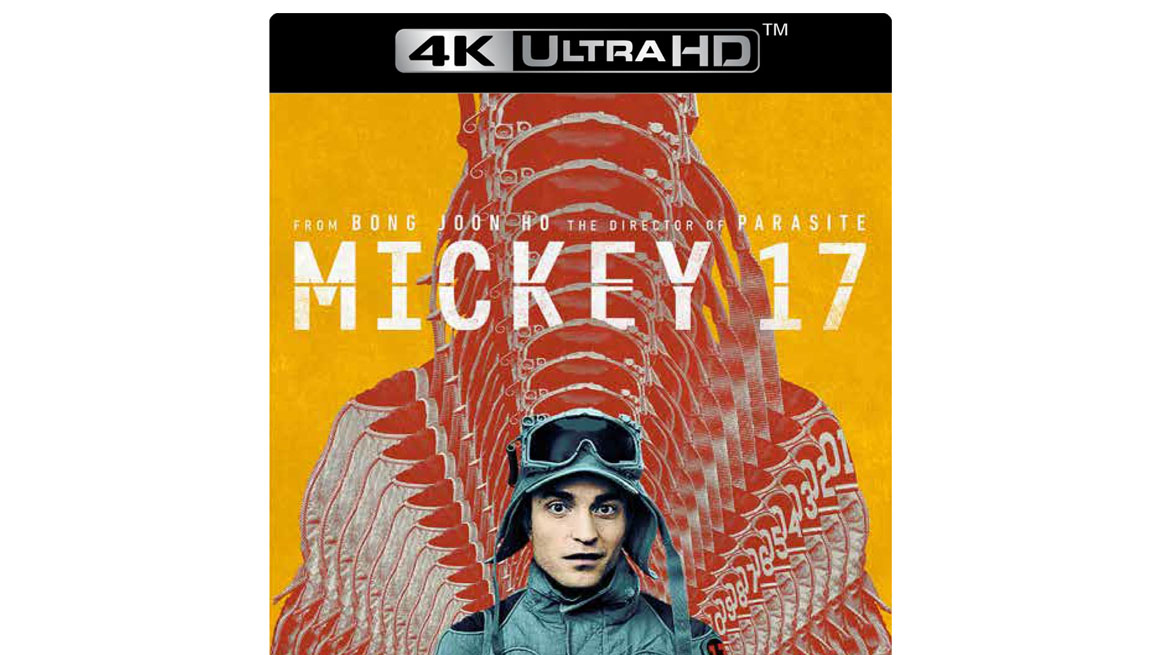TL;DR
Bong Joon-ho's *Mickey 17* dives into a darkly comedic sci-fi world where expendable clones are sent on suicide missions. Robert Pattinson shines as Mickey, navigating existential questions of identity as his clones are repeatedly replaced. While the film grapples with class and exploitation, its heavy-handed satire and somewhat exaggerated characters might miss the mark for some. The stunning UHD release, however, offers a visually and aurally immersive experience. Discover if this ambitious, if flawed, film is worth your time!
Mickey 17 is a dark science fiction comedy set on Niflheim, an icy planet where humanity is attempting to establish a colony, facing considerable challenges. Mickey Barnes (Robert Pattinson) is designated an “expendable”, an employee assigned to life-threatening missions with high mortality rates, followed by resurrection in a new cloned body. When Mickey 17 unexpectedly survives a mission, he is presumed dead. Upon his return to base, he discovers he has been replaced by Mickey 18, setting the stage for an existential and satirical narrative exploring identity, power, and the definition of humanity – or its replication.
Director’s vision
The film is directed and written by Bong Joon-ho, the South Korean director known for Parasite. With Mickey 17, his second English-language film, he revisits recurring themes: class divisions, exploitation, and human morality in extreme circumstances. Based on the novel Mickey7 by Edward Ashton, Bong takes creative liberties, crafting a more surreal and satirical adaptation. Notably, the film features Mickey’s demise significantly more often than the source material.
Acting and characters
Robert Pattinson embodies the dual roles of Mickey 17 and Mickey 18, and their on-screen interactions are convincingly achieved through modern film technology. Pattinson effectively portrays distinct variations of the same individual, reflecting the imperfect nature of the recreation process, which results in subtle alterations with each iteration. Naomi Ackie portrays Mickey’s girlfriend, Nasha, with a compelling performance. Similar to her portrayal of Whitney Houston in Wanna Dance with Somebody, she delivers a performance with significant depth and presence.
Caricature and over-explicitness
The colony’s leader, Kenneth Marshall, and his ambitious wife, Ylfa, portrayed by Mark Ruffalo and Toni Collette respectively, are somewhat exaggerated in their depiction. Their immense wealth underscores their perceived malevolence. This aspect highlights the director’s signature style, reminiscent of Parasite, where affluent characters are depicted in an unflattering light, detached from reality and prioritizing self-interest. However, such one-dimensional characters can become tiresome, offering limited narrative surprise as their actions predictably align with villainous choices.
When the vision doesn’t quite land
While anticipating a greater appreciation for Mickey 17 due to its thematic resonance, the film’s execution presented some challenges. In comparison to films like Terry Gilliam’s Brazil, which explores similar themes of the individual versus a large, impersonal society, Mickey 17 might have benefited from a production within a South Korean context. The actors’ delivery possesses a theatrical quality that, at times, feels somewhat incongruous. Furthermore, a more nuanced approach to social commentary would have been preferable; the film’s message is delivered with a heavy hand.
UHD release
Mickey 17 boasts a visually striking aesthetic, blending practical effects and CGI in a manner that feels both contemporary and reminiscent of older science fiction. Warner Bros. has provided a reference-quality UHD release, showcasing the film to its full potential. Mickey 17 was filmed using Arri Alexa 65 and Mini LF cameras in 6.5K and completed with a true 4K digital intermediate. The picture is presented in 1.85:1 with Dolby Vision and HDR10, delivering exceptional detail in both dark and bright scenes. The film’s predominantly gray-blue color palette is rendered accurately, and textures in snow, skin, and metal exhibit remarkable sharpness.
Sound and extras
The Dolby Atmos soundtrack provides an immersive and dynamic audio experience. The atmosphere on board the ship is enhanced by subtle sound elements, ranging from hissing vents to distant voices. The action sequences deliver significant bass impact, and the dialogue remains clear and well-balanced, even during the film’s more chaotic moments. The final battle, featuring a multitude of creatures converging on the colony, is particularly impressive.
The release includes a collection of short documentaries detailing the film’s production, offering insightful information despite their brevity. A commentary track would have been a valuable addition, providing further context for each scene.
In conclusion, despite some reservations regarding its accessibility compared to other works by Bong Joon-ho, Mickey 17 remains a recommended viewing experience due to its ambition, blending science fiction, satire, and existential themes. While the film is not without its flaws, the exceptional UHD release elevates the overall rating.
SF Studios provided review copies for this evaluation. The provision of materials does not influence our editorial independence, and we maintain objectivity with a focus on the interests of our readers and consumers.

